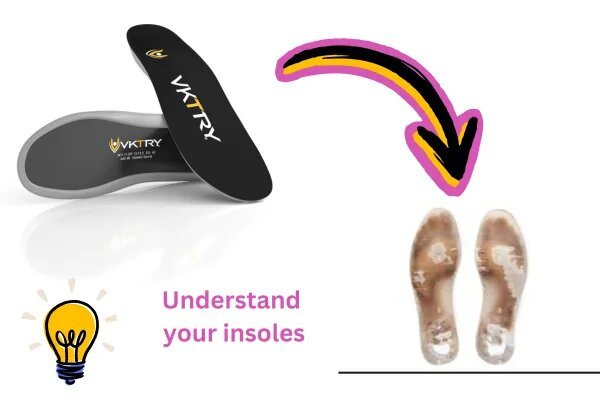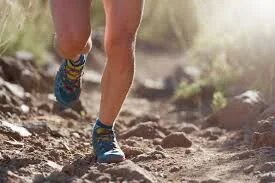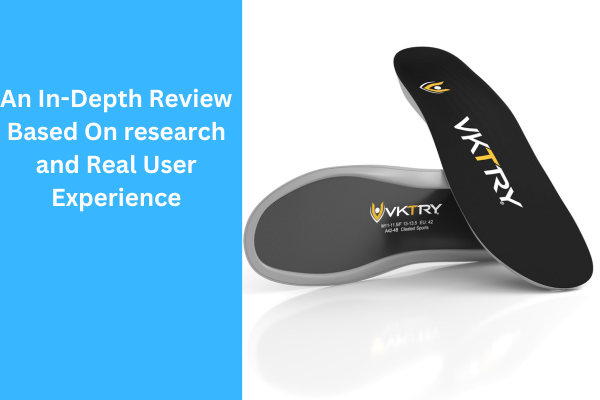
Choosing the right insole is major for enhancing sporting shows while assuring foot comfort. VKTRY insoles are popular for their modern tech and benefits, but one common question is: How long do VKTRY insoles last? This post will explore their expected life cycle, the factors that affect it, and tips for stretching their strength.
Understanding VKTRY Insoles
I know what I was expecting from VKTRY insoles, but trust me, VKTRY insoles are not normal insoles. Cutting-edge technologies are included in these performance insoles, which are made of aerospace carbon fiber material. They boost energy return, reduce injuries, and improve player performance. Unlike other insoles, VKTRY insoles are created to improve the biomechanics of the foot and lower limb, making them popular among athletes and physically active. Plus, many people wonder, How long do VKTRY insoles last? These durable insoles are built to withstand rigorous activity while maintaining their effectiveness over time.
The Life span of VKTRY Insoles
The life of VKTRY insoles can change depending on many factors. But on average, they are made to last between 1 to 2 years with regular use. Here are some factors that affect their life cycle:
Usage Frequency and Intensity
Daily Wear vs. Athletic Use
If you wear them while walking or standing they will last longer than if you were using them while playing basketball, running, soccer, etc. Activities that are intensive cause more wear and tear on the insoles particularly if they are of low quality in production.
Training Volume
Athletes who are involved in strict training plans or long-distance runners who put major distance on their insoles may find that their insoles wear out faster. However, casual use or less intense actions may increase their life cycle.
Body Weight and Foot Type
Body Weight: Obese people put more pressure on their insoles making them wear out much earlier than the shoes themselves. The prospect of lighter people might be to have a longer lifespan of the VKTRY insoles since utilization and weight stress on the material are low.
Foot Type and Gait
People with high arches, flat feet, or unique gait patterns may experience different wear rates. For instance, pronators (those whose feet roll inward) might put more strain on the inner edge of the insole, causing it to wear out more quickly in that area.

Environmental Conditions
Surface Type
It means the kind of surface on which you mostly walk or jog also determines the time for the replacement of insoles. Concrete, for instance, causes much more wear than softer surfaces such as grass or rubberized tracks.
Climate and Moisture
Display to severe climates or dampness can affect the materials of the insoles. For example, insoles used in hot, humid conditions or frequently exposed to water might degrade faster.
Maintenance and Care
Proper care and support can greatly affect the life cycle of your VKTRY insoles. Here are some tips:
Regular Cleaning
Your insoles should always be in good hygiene; make sure that you wash them with water and a piece of cloth. Do not submerge them in water or use chemicals to clean them for they will be spoilt.
Air Drying
If your insoles become damp after exercises, it is advisable that they be unstitched from the shoes and left to dry. This avoids the accumulation of moisture that causes the material to deteriorate.
Alternate Pairs
Thus, if you are an athlete or if you use insoles often have different pairs of VKTRY insoles to use as backups. Separating pairs allows each of them time to cool and is beneficial for their overall durability as well.
Signs That It’s Time to Replace Your VKTRY Insoles
Even with the best care, insoles will finally wear out. Here are some signs that indicate it’s time to replace your VKTRY insoles:
Visible Wear and Tear: Look for any visible signs of wear including signs of cracks, creases, or any other sign that shows that they must have been flattened significantly. These are clear indications that these insoles are no longer able to offer the best support possible.
Decreased Comfort: If you see a decrease in comfort and or support in your shoes, then it is time to get new insoles. They should be comfortable enough to wear and should offer you firm support and fabulous cushioning.
Foot Pain or Discomfort: Severe foot pain, soreness, or the re-occurrence of past foot problems may well indicate the fact that your insoles are no longer giving the same support and thus are worn out.
Reduced Performance: If you are an athlete, and you realize that your performance is dwindling, your insoles might be worn out and not offer the kind of energy return as before.
Comparing VKTRY Insoles to Other Brands
Comparing VKTRY insole’s duration with other brand insoles will be of help when trying to understand merest they will last. Foam or gel insoles typically last 6-12 months with daily use. VKTRY excels in durability and longevity due to aerospace-grade carbon fiber construction.
The Investment in VKTRY Insoles
Even if the price of VKTRY insoles were higher than the regular ones, it would be justified by the fact that they would last much longer and perform much better. This is with a view of helping athletes and other people with active lifestyles improve their support, and energy return. Also too markedly decreases the healthcare cost of foot and lower body disorders in the long run.
Conclusion
VKTRY insoles can last 1-2 years based on wear frequency, weight, and foot type. Also how they are washed and maintained plays a role in this. Therefore, whenever you ask yourselves, “How long do VKTRY insoles last?” as long as the liners used are well maintained provide the best support. Spending on VKTRY insoles gives better shock intake and comfort for athletes and routine people.
Additional Tips for Extending the Life of Your VKTRY Insoles
To further maximize the life span of your VKTRY insoles, consider these additional tips:
Proper Shoe Fit: Check the overall size of your shoes. Compare it appropriately before insertion of insoles, so that you are provided with the needed space for the insoles. This is because tight or loose shoes often place pressure on the insoles and get them worn out much quicker than normal shoes.
Rotate Shoes: Just as you might switch between pairs of insoles, rotating your shoes can also help ease the wear on your insoles. This practice allows both your shoes and insoles to recover and keep their shape and support.
Monitor Activity Levels: Be mindful of how your activity levels impact your insoles. High-skill workouts and sports can quicken wear.


